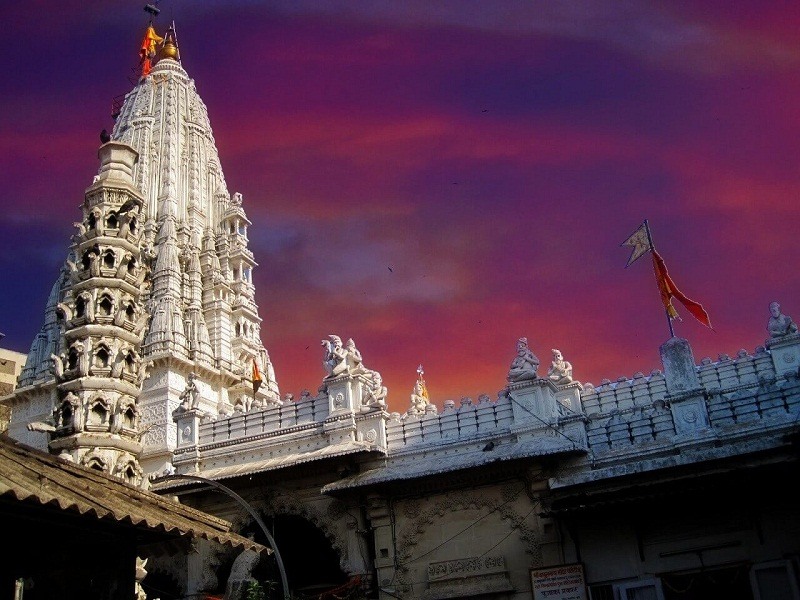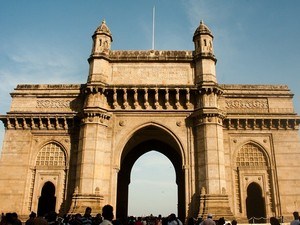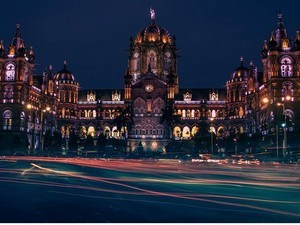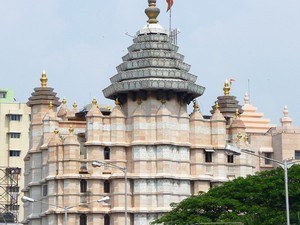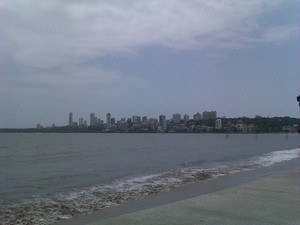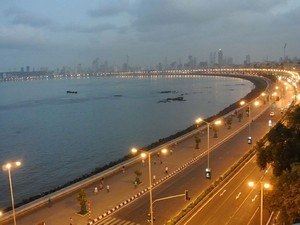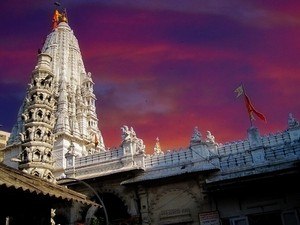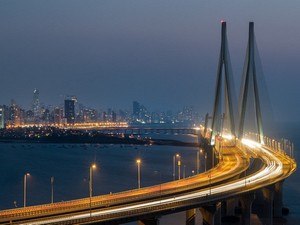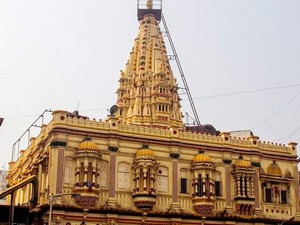Sri Babulnath Temple, Mumbai - Timings, Festivals, History, Darshan, Pooja Timings
Photo Credit: Flickr
 India | Maharashtra | Mumbai
India | Maharashtra | Mumbai
 #7 of 46 Places to Visit in Mumbai
#7 of 46 Places to Visit in Mumbai
 Distance (From Chhatrapati Shivaji Terminus): 5 Kms
Distance (From Chhatrapati Shivaji Terminus): 5 Kms
 Trip Duration (Including Travel): 1-2 Hours
Trip Duration (Including Travel): 1-2 Hours
 Place Location: End Of Marine Drive Near Girgaum Chowpa
Place Location: End Of Marine Drive Near Girgaum Chowpa
 Transportation Options: Bus / Cab / Auto / Walk/Trek
Transportation Options: Bus / Cab / Auto / Walk/Trek
 Travel Tips: None
Travel Tips: None
About Sri Babulnath Temple
At a distance of 5 Km from Mumbai Chhatrapati Shivaji Terminus, Sri Babulnath Temple is an ancient Hindu temple situated at the end of the Marine Drive near Girgaum Chowpatty in Mumbai. Situated on a small hillock, Sri Babulnath Temple is dedicated to Lord Shiva. Visitors come to this sacred site to receive blessings from Lord Shiva and Devi Parvati, hoping for the realization of their desires. The temple is considered very unique and fascinating. Situated at an altitude of 1,000 feet, the temple offers a beautiful view of the city, and the Arabian Sea. It is one of oldest temples in Mumbai and among the must-include places in Mumbai pilgrimage packages.
History of Babulnath Temple
The Babulnath Temple was established and the idols were consecrated in the 12th century by King Bhimdev. Over time, it was destroyed by Muslim invaders, leading to the burial of the idols. Between 1700 and 1780, these idols were excavated, revealing five original figures: the main Shiva Linga, Ganesh, Hanuman, Parvati, and one additional idol. Of these, the first four are currently housed in the temple, while the damaged fifth idol was submerged in seawater. The temple's location was originally pastoral land owned by Pandurang, a wealthy goldsmith, who constructed the Babulnath Temple in 1780. The existing structure was completed in 1890 CE by Maharaja Sayajirao Gaikwad of Baroda state, a Gujarati. In 1900, a tall spire was added to this sacred temple dedicated to Lord Shiva, but it suffered damage from a lightning strike in the 1960s.
Mythology of Sri Babulnath Temple
Initially, the area of the temple was a pastoral land owned by Pandurang, a wealthy goldsmith. He had a boy named Babul who tended to his cattle. One evening, a cow named Kapila did not produce milk, prompting Babul to observe her. He discovered that the cow consistently poured all her milk in a specific spot each evening. After monitoring this behavior for several days, he informed Pandurang of the unusual occurrence. Pandurang then followed the cow and instructed Babul to excavate the area the following day. This led to the discovery of a large Shiva Linga, which is the site where the Babulnath Temple was constructed. During the excavation, idols of Ganesha, Hanuman, and Parvati were also unearthed. In 1780, Pandurang established the Babulnath Temple around the Swayambhu Shivling, which is now referred to as Babulnath Temple.
Architecture of Sri Babulnath Temple
Situated at an elevation of 1000 feet, Babulnath Temple in Mumbai exemplifies the Marathi temple architectural style characterized by elaborate carvings and exquisitely sculpted pillars. Constructed from limestone and marble, the temple features pillars and ceilings embellished with intricate carvings depicting scenes from Hindu mythology. The marble flooring, sourced from Rajasthan, further enhances the temple's visual appeal. Until 1890, Babulnath Temple was recognized as the tallest edifice in Mumbai, until a lightning strike damaged its gopuram.
The sanctum contains a Swayambhu Shivalinga, which serves as the temple's centerpiece. To access the main shrine housing the Shivalinga, visitors must ascend 110 steps. Additionally, there are smaller shrines dedicated to deities such as Lord Ganesha, Goddess Parvati, and Lord Hanuman. The temple also features a prayer hall where devotees can meditate and wait in line for darshan. From the temple, worshippers are treated to a stunning view of the city and the Arabian Sea.
Festivals of Sri Babulnath Temple
The most significant festival observed at Babulnath Temple is Maha Shivratri, a key Hindu celebration honoring Lord Shiva. Taking place in February or March, this festival features elaborate festivities, including unique rituals, chanting, and all-night prayers. Other notable celebrations at the temple include Kartika Poornima, Navratri, and Diwali. Additionally, Mondays are regarded as particularly auspicious for Lord Shiva, attracting numerous devotees to the temple on these days.
Dress Code & Other Restrictions of Sri Babulnath Temple
Although Sri Babulnath Temple does not enforce a strict dress code, it is advisable to wear modest attire that covers the upper arms and legs as a mark of respect. Men are encouraged to don a dhoti or pajama along with an upper garment, or alternatively, formal trousers and shirts. Women may choose to wear a saree, half saree, or chudidhars. It is recommended to avoid modern clothing such as mini-skirts, shorts, and sleeveless tops while visiting the temple.
Non-Hindus are generally allowed to enter Babulnath Temple in Mumbai. The temple is open to all, regardless of their religious background.
Sri Babulnath Temple Timings
Monday: 6 AM - 10 PM
Tuesday: 6 AM - 9 PM
Wednesday: 6 AM - 9 PM
Thursday: 6 AM - 9 PM
Friday: 6 AM - 9 PM
Saturday: 6 AM - 9 PM
Sunday: 6 AM - 9 PM
Sri Babulnath Temple Entry Fee
General Entry is Free
Special Darshan available for Rs. 200
Best Time to Visit Sri Babulnath Temple
The best period to visit Babulnath Temple is between October and March, when the weather is pleasant and ideal for temple visits. To fully immerse yourself in the temple's spiritual atmosphere, consider scheduling your visit during the Maha Shivratri Festival, which features grand celebrations including special rituals, chanting, and night-long prayers. The summer months from March to June can be excessively hot and humid, while the monsoon season from June to September is characterized by heavy rainfall that may disrupt travel plans.
How to Reach Sri Babulnath Temple
Chhatrapati Shivaji International Airport, located approximately 19 kilometers from Sri Babulnath Temple, serves as the closest airport. It offers extensive flight connections to prominent international destinations such as Dubai, Sri Lanka, Thailand, Malaysia, Singapore, the USA, and Europe, as well as various domestic locations including Hyderabad, Bangalore, Chennai, Delhi, Jaipur, Kochi, Trivandrum, Kolkata, and Goa. Additionally, the Victoria Terminus and Bombay Central Stations in Mumbai provide robust train services linking the city to major towns and cities across India, including Delhi, Kolkata, Chennai, Hyderabad, and Bangalore. Mumbai is also efficiently connected by bus to cities like Bangalore, Hyderabad, Mangalore, Goa, Ahmedabad, and Pune. Travelers can reach the temple from these locations by utilizing city buses, auto-rickshaws, or taxis.



